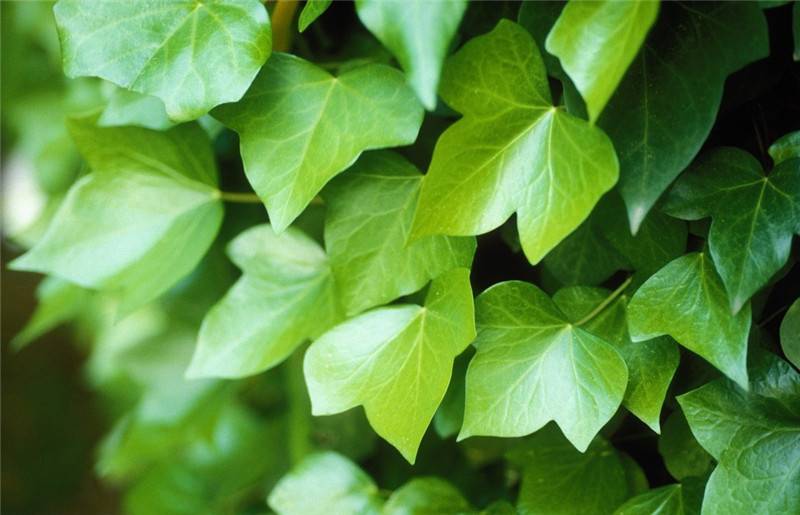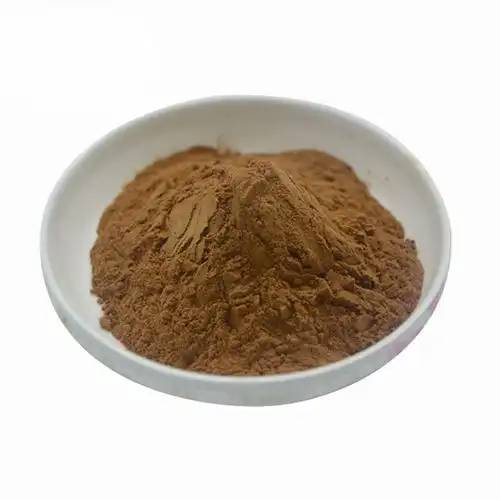Exploring the Potential of Ivy Leaf Extract Hederagenin in Functional Food Formulations
Green Spring Technology, as a leading provider of plant extract solutions, remains committed to identifying natural active ingredients with high application value다. Today, we are focusing on a key pentacyclic triterpenoid compound derived from multiple medicinal plants—Hederagenin (Ivy Saponin), whose significant health-promoting potential is inspiring new ideas for formulators in the food, beverage, and dietary supplement industries.
1. Wide Availability, Natural Advantages
Hederagenin is widely found in nature and is one of the active components of traditional medicinal plants such as Coptis chinensis, Lonicera japonica, Clematis armandii, Pulsatilla chinensis, and Schisandra chinensis. This ensures a stable supply as a sustainable raw material, aligning with the strong market demand for natural and plant-based ingredients.

2. Breaking Through Bottlenecks: Technological Advances in Enhancing Bioavailability
Although natural hederagenin faces solubility challenges, cutting-edge research has achieved significant breakthroughs.
Scientists have successfully developed a series of Hederagenin derivatives with significantly improved water solubility and enhanced bioavailability by innovatively modifying its molecular structure (primarily at the C-3, C-23, and C-28 positions) through chemical modifications such as esterification, amidation, succinylation, and the introduction of hydrophilic groups. These technical advancements open up new possibilities for exploring its application in various end-product formulations.
3. Hederagenin: A Natural Source of Innovative Functional Molecules Empowering Product Development Across Multiple Fields
Hederagenin, a naturally occurring pentacyclic triterpenoid compound, is widely distributed across multiple plant families, including the Apiaceae, Caprifoliaceae, and Araliaceae families, with abundant natural resources and excellent sustainable supply potential, providing a solid foundation for functional ingredient development.
In terms of application chemistry, the molecular structure of hederagenin contains multiple modifiable sites, including a hydroxyl group at the C-3 position, a double bond at the C-12/C-13 position, a hydroxyl group at the C-23 position, and a carboxyl group at the C-28 position. These active groups offer abundant possibilities for targeted chemical modification and derivative development, helping companies create more differentiated and high-value-added end products.
Currently, the development of derivatives based on this component is emerging as a new hotspot in the field of natural product applications, demonstrating broad prospects in industries such as cosmetics, functional foods, and plant-based formulations.
We will continue to monitor research progress and technological breakthroughs in this class of compounds, providing customers with stable and compliant raw material solutions to jointly advance product innovation and market commercialisation.
Significant progress has been made in the C-28 modification of Ivy Saponin, offering new opportunities for companies to develop innovative natural derivatives.
Research shows that through alkylation, amidation, and click chemistry, among other methods, structurally diverse and functionally distinct derivatives can be efficiently constructed at this position, significantly expanding their application potential in pharmaceuticals, cosmetics, and functional foods.
Green Spring Technology continues to focus on natural product modification research, providing clients with compliant, customizable raw material solutions to support product innovation and industrial upgrading.
4. Hederagenin (Ivy Saponin) Research Progress: The Application Potential of Natural Active Components Continues to Expand
Recent studies have shown that Hederagenin (Ivy Saponin) and its derivatives exhibit diverse biological activities in various biological models, providing scientific support for their application in functional raw materials.
In vitro experiments have shown that Hederagenin exhibits certain inhibitory activity against certain microorganisms (such as Enterococcus faecalis and Staphylococcus aureus) and has been observed to have potential effects in some parasitic models (such as Leishmania). Animal experiments also suggest that it may have regulatory potential in certain physiological processes. These preliminary findings provide valuable references for further research into Hederagenin as a functional ingredient.
It should be noted that current research is primarily based on cell or animal models and remains at the laboratory stage. The application of Hederagenin in actual food, beverage, or dietary supplement products requires customers to complete final product development, safety verification, and compliance claims in accordance with target market regulations.
Green Spring Technology's high-quality ivy extract (Hederagenin) ingredient: Providing scientific raw material support for functional product innovation
Green Spring Technology leverages its mature extraction and purification processes to offer high-purity, high-stability ivy extract (ivy saponins, Hederagenin), which boasts the following core advantages:
· High purity and compliance assurance: The product strictly complies with international standards, providing complete compliance documentation and COA to ensure seamless market access globally;
· Excellent Solubility and Stability: Through technical optimisation, we have significantly improved the physical properties of the raw material, making it suitable for various formulations such as solid beverages, tablets, capsules, and liquid formulations.
· Scientifically Backed with Clear Application Potential: Existing research indicates that Hederagenin has a unique structure and diverse biological activities, providing innovative directions for the development of functional foods, dietary supplements, and other products.
Green Spring Technology can provide customised raw material solutions, including solubility optimisation, stability treatment, and formulation integration support, helping your products stand out in the competitive market.
We welcome health product companies and R&D procurement experts to contact us at helen@greenspringbio.com or WhatsApp: +86 13649243917 for samples, technical information, and cooperation proposals. Partner with Green Spring Technology to empower your next-generation health products!
참조
[1] 키슈아이, 후후아.HPLC-DAD-ELSD에 의한 Clematis의 한약재 중 Oleanolic Acid와 Lupeol의 측정 (Determination of Oleanolic Acid and Lupeol in Herbal Medicine of Clematis by HPLC-DAD-ELSD [J.광동제약대학 논문집 2010, 26(1):67-69.
[2] 이휘준, 이평.HPLC-ELSD를 이용한 인동덩굴의 ivy saponin과 oleanolic acid 측정 (J.약품분석학회지, 2006, 26(6):820-822.
[3] Liu Y. Q., Xie Y., Peng Y. M. 등.HPLC [J]에 의한 Lonicera japonica의 Determination of Lonicerin.후난한의대학교 논문집 2014, 34(3):28-30.
[4] 리카이탕, 시환, 장디 등.HPLC를 이용한 루파 뿌리 한약재 중 아이비 사포닌의 함량 확인 (J.중국실험식학회지 2013, 19(18):145-147.
[5] 리주펑, 천진푸, 탕샤오리 등이 있다.HPLC에 의한 Cynanchum atratum의 공급원에 따른 아이비 사포닌의 함량 확인 [J.New Chinese Drugs and Clinical Pharmacology, 2013, 24(6):606-609.
[6] 탄울리, 리민, 우수야오.HPLC에 의한 계피 cassia 껍질의 ivy saponins 측정 (Determination of ivy saponins in Cinnamomum cassia bark by HPLC [J.현대한의학연구와 실천, 2011, 25(5):68-70.
[7] 시룽메이, 겡동현, 리신화.HPLC에 의한 흑커민 종자의 아이비 사포닌과 oleanolic acid의 함량 측정 [J.약학저널 Journal of the Chinese People's 광복군, 2012, 28(3):245-247.
[8] 완신, 시진리, 류용 등.연구논문:파트리니아속 (Patrinia) 식물의 화학성분과 약리학적 효과 (J.외래내과:한방내과학회지, 2006, 21 (2):53-59.
[9] 장첸.바나나 뿌리, 바나나 꽃 및 남호 마름의 활성성분에 관한 연구 (D.카이펑:허난대학, 2011.
[10] 관영리, 류자무, 서영난.연구논문:Pulsatilla 식물의 Triterpenoid Saponins 및 생물학적 활성에 관한 연구 (J.선양제약대학교 논문집 2009, 26 (1):80-83.
[11] 주진두안, 위안더전, 우수에루.여러 기원의 전구체 씨앗 허브의 로니세린 함량 확인 [J.한약재, 2013, 36 (3):426-427.
-
Prev
The Potential Application of Natural Ingredient Ivy Extract Hederagenin in Health Products
-
다음
민들레 음료에 관한 연구


 영어
영어 프랑스
프랑스 스페인
스페인 러시아
러시아 한국
한국 일본
일본




